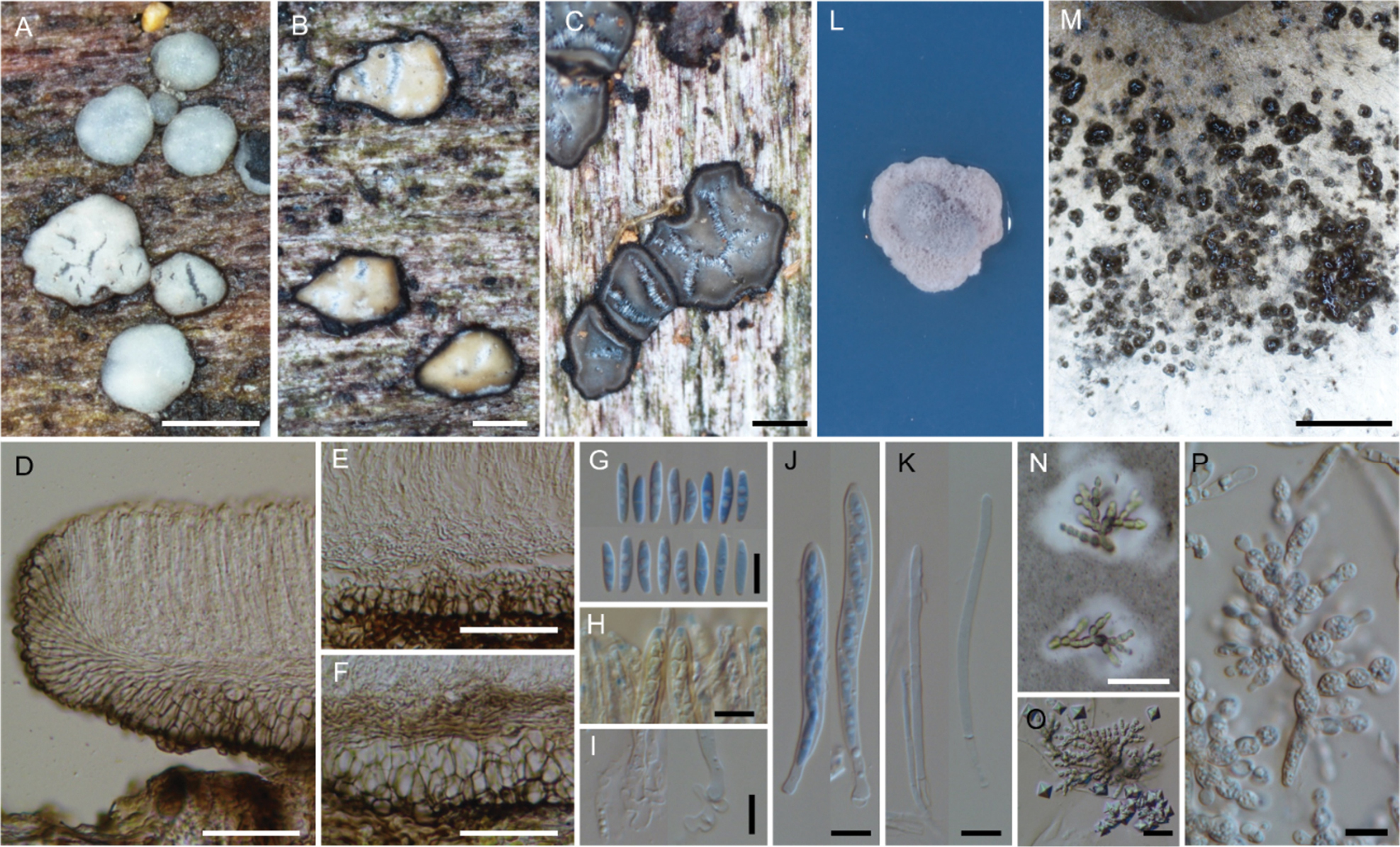
|
||
|
Neobelonopsis bicolor (TNS-F-86605, holotype) A fresh apothecia on decaying unidentified wood (TNS-F-86666) B dried apothecia with yellowish disc and blackish flask (TNS-F-86666) C dried apothecia with greyish discs D vertical section of the apothecium (TNS-F-86666, in LA) E hyaline medullary excipulum (TNS-F-86666, in LA) F brown medullary excipulum G ascospores (in CB/LA) H blue-stained apical pore of asci (in Melzer’s solution after 3% KOH pretreatment) I croziers at the base of asci (in CB/LA) J asci with ascospores (in CB/LA) K paraphyses (in CB/LA) L one month old colony on PDA M dark, gelatinous hyphal mass on CMA N monilioid hyphae surrounded by a gelatinous sheath (in diluted black ink) O octahedron crystals with monilioid hyphae on CMA (in water) P monilioid hyphae containing abundant guttles (in water). Scale bars: 1 mm (A, M); 0.5 mm (B, C); 50 μm (D–F); 25 μm (N, O); 10 μm (G–K, P). |